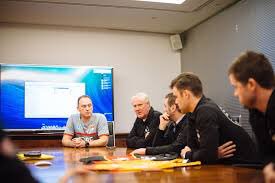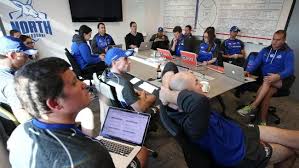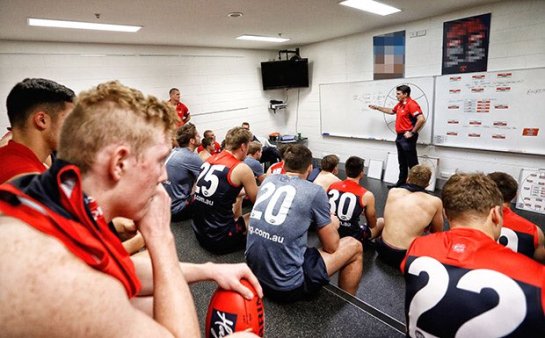The Thursday night ritual in the early 70’s was to train hard on Thursday night, then pack up the EH Holden with an esky, pick up the girls from their homes and head to the double feature at the Essendon Drive-In. We were eighteen; just got our licences and the car could accommodate three couples. The first feature finished about 9.30; just in time for selection on radio 3DB. While we were out on a Thursday night we did insist on rules regarding selection. The Essendon Drive In was where I first found out I would debut for Essendon. Ah, Essendon in the 70’s; such a great place to grow up.
- If you got in the team you had to stop drinking.
- If the three of us got in we packed up, dropped the girls home and got excited for a game of football.
- If 2/3 didn’t get selected then you had to stay.
The next day was a huge occasion as the back page of the Herald Sun had all the teams and you got your name in the paper. Even better if Lou Richards mentioned you in the game preview. Then the bad news; you were making your debut at Moorabbin!

We are slightly more advanced in the 2000’s and it’s interesting to see how clubs go about the selection process. I’ll outline it the best I can, so the reader can gain an insight into exactly what the process is. Come 6.30, there is outrage on Twitter as a club ‘wields the axe’ or another favourite is unceremoniously dumped. My personal favourite is ‘Langford’s gone again!’. Passionate football members receive their exclusive team news via phone apps or club websites. Channel 7 has the exclusive rights to team selection but it’s too late. The teams are already out. All in the name of ‘views’ and ‘clicks’, promotion, exclusivity and marketing. Yes, selection has become a business.
Selection panels have greatly evolved. When I started (way back when), it was a wise old former player as Chairman of Selectors. He was generally on the Board, and his main job was to leak selection to all other Board members, who in turn told their mates, to make them sound important! The senior coach and his key assistant were the other members. So I grew up in Tasmania- and early days at Essendon- not knowing who actually picked the team, but reading it in the paper, listening to the radio, or in the case of my old club- Sandy Bay FC- in the butchers shop window. A tradition, which would still continue in the great country towns of Australia.
Clubs have adopted and adapted their own systems of selection over the years, but generally had a similar pattern. In the 1980’s when Essendon played in three Grand Finals, Chairman of Selectors, Brian Donohoe, selector (ex player) David Collins, assistant Kevin Morris, opposition analyst, the late great Gerard ‘Gus’ Mitchell (of St. Bernard’s fame) and of course , the coach, Kevin Sheedy, made up the selection panel. It was reasonably basic. They would review the seconds’ game and best players, receive the injury report from Doc Reid (great longevity by Doc!), analyse the opposition for half an hour and then begin the selection process. Generally the process went from 7.30 after training and concluded at around 10.30. Meals were shipped down from the social club. On Thursday night a squad would be named on the notice board. If you made the ‘28’ you went to the players’ dinner in the Essendonian’s Room alongside the change room where huge steaks and apple pie were par for the course. Sheeds went through the opposition and also his notorious video analysis of our game the week before. Anything for one to two hours which regularly resulted in players swapping remote controls on him or putting dead batteries in the remote. That assured us of getting home before 11.00pm!
This pattern didn’t stop under Sheeds, which had a bit to do with the Kickett saga of 93. They took so long to decide on Kickett- Flood-Wallis that they couldn’t find the players to tell them if they were in and out. Sheedy got the selection right; just not the communication to Derek.
So to the current day and your team’s selection. It can be somewhat of a rolling maul due to the fact that there are so many meetings scheduled with players (full-time) and football staff. Co-ordination for this can be the role of the Football Manager, Operations manager or in Richmond’s case, Head of Coaching and Football Performance, Tim Livingstone. In brief Tim will coordinate every weekly meeting, process, record training and facilitate the whole selection process. This ensures that there are no ‘surprises’ in the weekly preparation for all staff and players. The coaches will coach.
Most likely, the first meeting is the game review and planning meeting. Let’s just look at a basic Saturday to Saturday scenario which can obviously happen, but is unusual in this era’s fixturing. The VFL team report will be extremely important, and the expectation is that ALL coaches will attend the VFL game. Extraordinary and negligent if this doesn’t happen. By this time, the Opposition Analyst should have forwarded a full review of this week’s opponent and all opposition players and areas (Kick outs, Clearances etc etc ) coded for immediate planning access for the zone coaches. The medical team presents the injury assessment, and the previous game is reviewed in preparation for the players’ review as soon as they arrive.
An official selection meeting is probably convened every Tuesday afternoon and may go for several hours. In attendance will be:
- Senior Coach
- Football Manager
- Admin/Logistics Manager (planning)
- VFL Coach
- Assistant Coaches
- Opposition Analyst
- Club doctor
- Possibly Welfare Manager, Sport Psych and Recruiting Manager due to their inner knowledge of the players
- IT person who will run edits

It does seem like a lot of people, but if coordinated well and everyone listens intently as each person speaks about their specific area, then it covers all areas of selecting a team. The coach should be a great listener, and while he has the ultimate say and responsibility, respect for the knowledge of his assistants should be valued highly. The Football Manger’s role ( eg Balme) is important, ensuring a measured, calm and professional meeting.
20% of selection should be looking at taking away the key area of the opponent’s plan/system or structure. This will include any individual match-ups and ‘what if’ scenarios. For example: This week Westhoff will go behind the ball at certain times and Motlop will start at the back of the square and run through. How much time and discussion would you spend on Selwood, Ablett and Dangerfield? Is Rory Laird the key to Adelaide’s backline and do ‘we’ have to tag Sloane? Or, yesterday what was Essendon’s plan to combat the Dogs’ loose man in defence? Once those questions are answered, then the process can continue around selection of the team and the balance and structure. Coded edits of specific areas of the opposition will be examined, and there will be a significant section on statistical analysis. The opposition analyst is critical at this junction and he should have seen the relevant team play LIVE at least 3 times.
Having personally done this role for over 10 years, it’s all very well to have vision from all angles and reams of stats. Any mathematician can analyse stats but there is nothing that comes close to the intel gained from watching live football. Player idiosyncrasies, habits and characteristics/weaknesses play a huge role in live observation. Something as simplistic as ‘play on Tom Mitchell’s left side at all times’ therefore cut out the preferred turning arc of his game. Up until this year (through a habit forged over 10-15 years) I would average 50-60 live games per year including all finals. You develop a mental memory bank. Trust your sight…not a stat sheet. Don’t conceal your lack of game intelligence behind the confusion of multiple stats sheets. I have easy access from Essendon by train to Etihad and the MCG. I love open training sessions and especially the ones that aren’t open. Ha ha!! If the analyst does not watch live football, he is either lazy or incompetent. The key is to come up with a statistical and visual pattern. This will also form the basis of the opposition meeting with players. This should be succinct. The players want to know how to win, not to hear the sound of your voice.
Retention in meetings.
So this information comes ‘on line’ in so many ways, and is available to the players and coaches through a variety of codes, apps or in basic meetings. Players should have access to apps on phone which gives them their own game, edited, as well as the opposition team and individuals. It’s important that long meetings are minimised as players (and coaches) vary greatly in their retention ability. If I went longer than 10 minutes in 2000, Solly (Dean Solomon), Rama (Adam Ramanauskas) and Hirdy had already dozed off!
Retention of information:
- Lecture of >20 min 5% retention of information
- Reading 10% retention
- Audio and Visual 20% retention
- Practical demonstration 30% retention
- Player and coaches discussion group (eg Backline) 50%
- Kinesthetic training (or tactile learning is a learning style in which learning takes place by the players carrying out physical drills, rather than listening to a lecture or watching demonstrations.) 80%
- Syndicate and peer support learning ( small groups going about a plan ) 90% retention
NB: So if a coach or opposition analyst stands up in front of the group and loves the sound of his own voice, quickly give him the wind up as nothing is going inside the head of the players.

Naming the team.
I guess there is a place for the old method but players find out the result of selection in many ways. This will depend on the time of the game: Thurs, Friday, Sat or Sun. There will be players informed that they are ‘carry over’ players because the VFL plays a day before the AFL. A player may be informed he is on standby for a late injury withdrawal. Groups may meet (Backs Mids Forwards) where the line coach will announce the positions and match ups. Players may find out from a group text (the squad) or an individual phone call. And it is still possible to find out the squad team via, social media or the news, as players may have the afternoon off. HOWEVER, it remains the total responsibility of the senior coach to talk to every player regarding the selection decision. This can be either ‘in’ or ‘out’. This must done face to face before the last team tactical meeting. Players have an absolute right to hear from the coach. I sense the Essendon conversations with young Kyle Langford are becoming increasingly difficult.
Given the amount of meetings and training sessions, it is hard to imagine that the result of the selection process is not conveyed fully to all players. The VFL or Development Coach has a big role then, to provide direction and feedback to his generally young players about promotion prospects.
Every club will have subtle differences, but one thing is for sure’; they will not hear their fate over the radio at the Essendon Drive In.
Robert Shaw
9/4/2018
A great explanation Shawry . Learnt heaps from it ( although may only retain 20 % ! ) . Cheers , Steelo
LikeLike